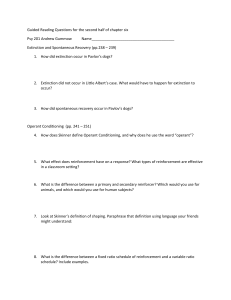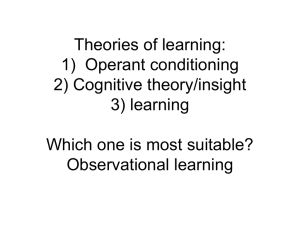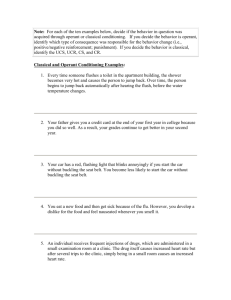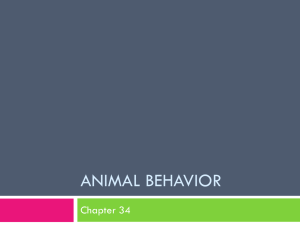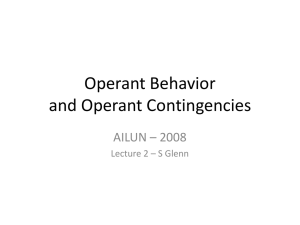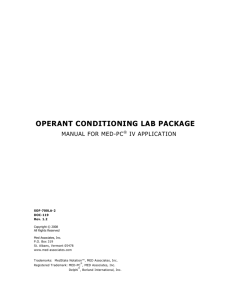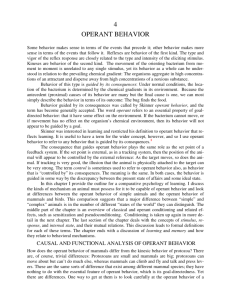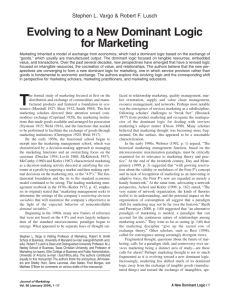Components of Operant Conditioning
advertisement
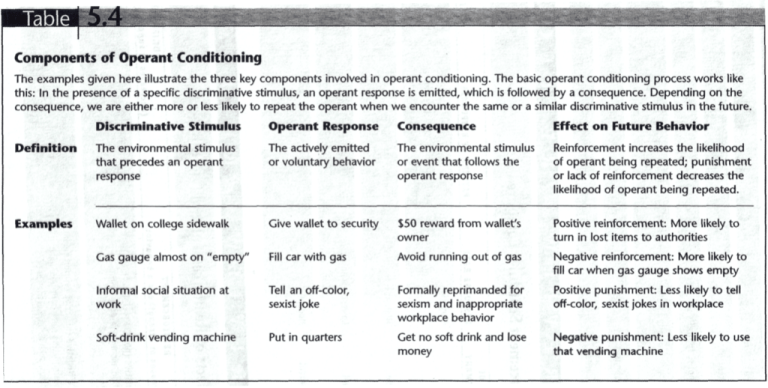
Components of Operant Conditioning The examples given here illustrate the three key components involved in operant conditioning. The basic operant conditioning process works like this: In the presence of a specific discriminative stimulus, an operant response is emitted, which is followed by a consequence. Depending on the consequence, we are either more or less likely to repeat the operant when we encounter the same or a similar discriminative stimulus in the future. Discriminative Stimulus Operant Response Consequence Effect on Future Behavior Definition The environmental stimulus that precedes an operant response The actively emitted or voluntary behavior The environmental stimulus or event that follows the operant response Reinforcement increases the likelihood of operant being repeated; punishment or lack of reinforcement decreases the likelihood of operant being repeated. Examples Wallet on college sidewalk Give wallet to security $50 reward from wallet's owner Positive reinforcement: More likely to turn in lost items to authorities Gas gauge almost on "empty" Fill car with gas Avoid running out of gas Negative reinforcement: More likely to fill car when gas gauge shows empty Informal social situation at work Tell an off-color, sexist joke Formally reprimanded for sexism and inappropriate workplace behavior Positive punishment: Less likely to tell off-color, sexist jokes in workplace Soft-drink vending machine Put in quarters Get no soft drink and lose money Negative punishment: Less likely to use that vending machine



